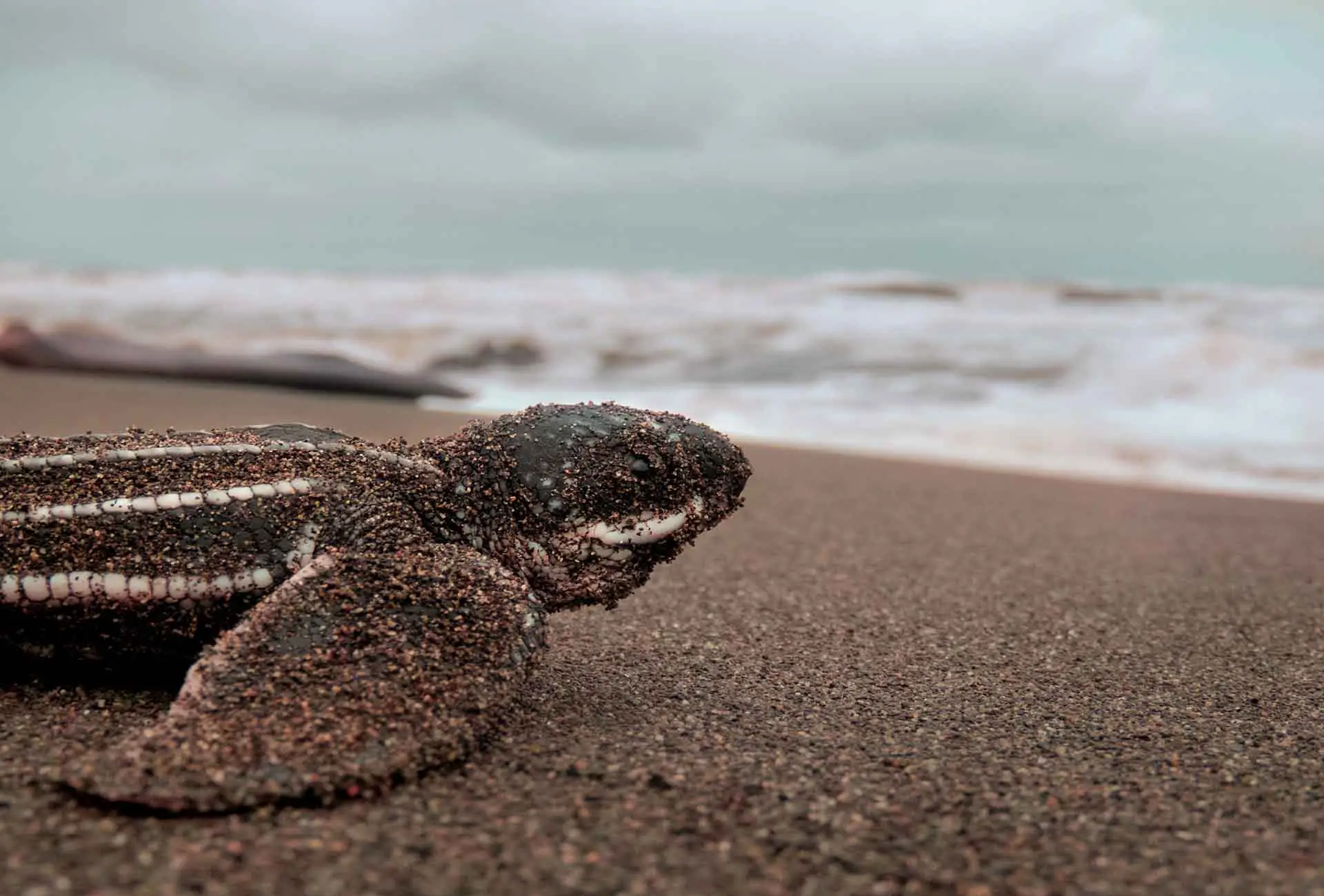
Wildlife Fact Sheet
Leatherback Sea Turtle
Dermochelys coriacea
About
Leatherback sea turtles are the largest sea turtles in the world! They can grow up to seven feet and weigh more than 2,000 pounds. While all other sea turtles have a hard body shell, leatherback sea turtles do not. You can recognize them by their soft carapace (top shell). Leatherback sea turtles have a top shell that is smooth, bluish-black leathery skin with small white spots that cover a matrix of bones with seven ridges (keels). Their back is where they get their name—since it’s smooth and leathery!
Leatherback sea turtles are the most migratory and wide-ranging of all sea turtle species. If you look in the Atlantic, Pacific and Indian Ocean you will find leatherback sea turtles. After reaching sexual maturity at age 16, leatherback sea turtles make their way back to the exact beach where they were born (their “natal beach”) where they nest every two or three years. Leatherback sea turtles climb onto the beach at night, lay clutches of more than 100 eggs during the breeding season, and then return to the sea. After about two months, hatchlings emerge from the nest and make their journey to the ocean.

Did You Know?
Leatherback sea turtles can dive to depths of 4,200 feet, deeper than any other turtle, and can hold their breath for up to 85 minutes.
Join our mailing list
Status and Conservation
Leatherback sea turtles spend their days swimming through the vast open ocean looking for tasty treats. Unfortunately, they encounter a lot of trash and other dangers along their journey. Leatherback sea turtles have large front flippers that can easily get entangled in trash or lost fishing gear, which makes it hard for them to swim and can even be fatal. Leatherback sea turtles can easily confuse plastic bags and their favorite food: jellyfish. So, to ensure their amazing species continues to thrive, humans need to work to keep plastics off the beaches and from entering the ocean.
Fast Facts
- Leatherback Sea Turtle Size
- Leatherback Sea Turtle Dive Depth